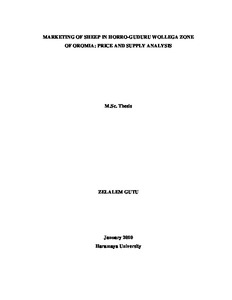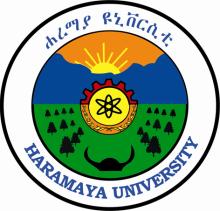Resource information
Sheep production is an integral part of the subsistence crop-livestock systems of Ethiopian highlands and plays crucial role in economic development and poverty reduction. So far, there have been very limited efforts exerted to introduce and promote market oriented sheep production and hence the current income generating capacity of the sector is not at all encouraging. Therefore, reorientation of sheep production systems towards consumer preferences and demands through timely and comprehensive transformation need to be given due emphasis. With the intent of contributing in this line, this study analyzed whether prices of indigenous sheep breed are influenced by their own traits as well as other market and temporal factors. The level and intensity of market participation was also investigated as the willingness and level of market participation by the sheep keepers determines the effectiveness of interventions to reorient the production system. Determinants of the decision to participate in sheep production were also identified and analyzed in this study. Data were generated both from the rural households in their villages and from sheep sellers and buyers in four rural markets in Horro-Guduruu Wollega Zone of Oromia. Hedonic pricing model was fitted for the analysis of determinants of indigenous sheep price. The empirical result indicates that phenotypic traits of traded sheep (age, color, body size, and tail condition) are major determinants of price implying the need for development of comprehensive breeding program. Season and market locations are also very important determinants of price suggesting the need to target season and market place in breeding program so that sheep keepers benefit from the intervention and hence the program become sustainable. To investigate production participation decision, Probit model was employed and the result show that livestock asset base, access to extension service, access to market information and educational background of the household head are significant determinants of production participation decision. Thus, the implications are that improving farmers’ access to extension service including livestock market information, improving access to credit service to develop farmers’ asset base, and expanding educational opportunity in the rural area would result in farm households’ ability to diversify their livelihood strategy. Poisson and Negative Binomial models were employed to examine factors determining the level of market participation by sheep keepers. The empirical results of both types of models consistently show that flock size, family size, educational background, experience, access to market information, and access to veterinary service were decisive determinants of level of market participation for sheep keeping farm households. The implications of these empirical results indicate the need to expand and capacitate service providing institutions, like veterinary services and livestock market information services, to improve access to the services and hence enhance market participation and advance producers income. As educational background and production experience are also the vital determinants, provision of training to farm household is important to increase market participation by sheep keepers.



